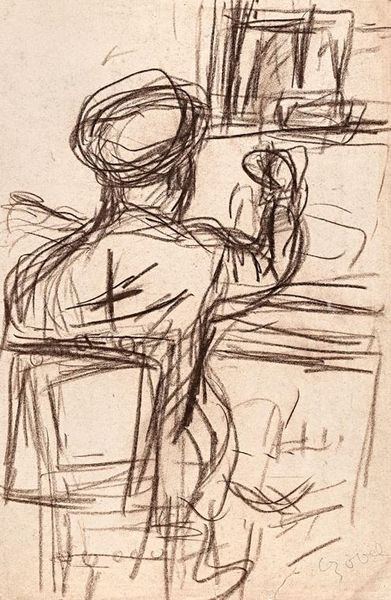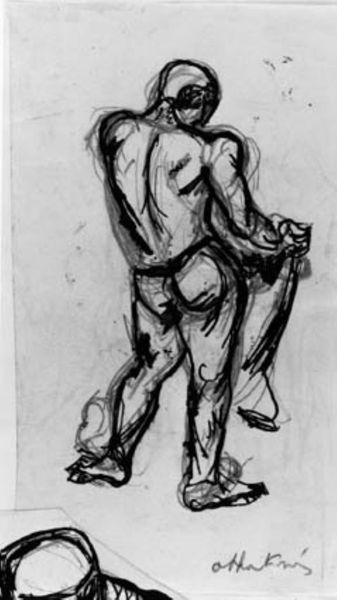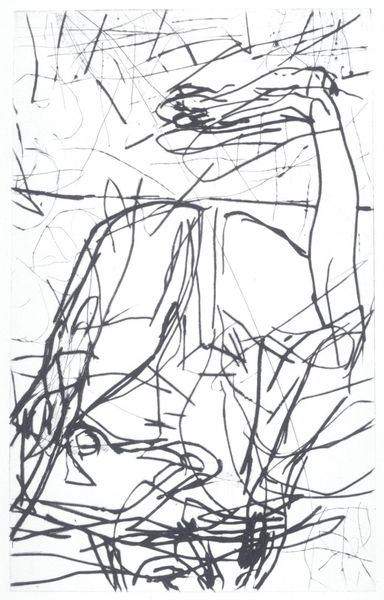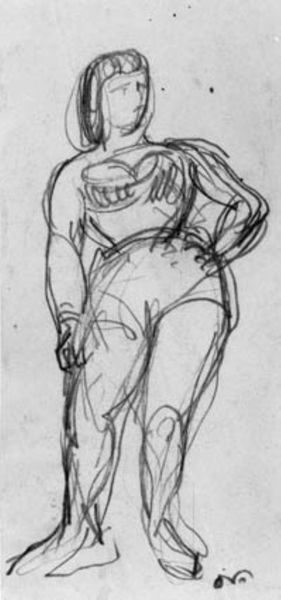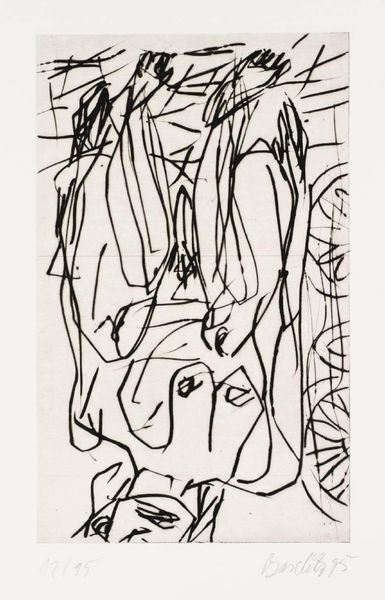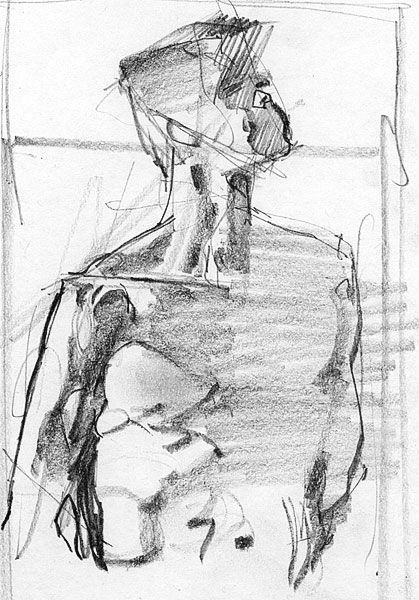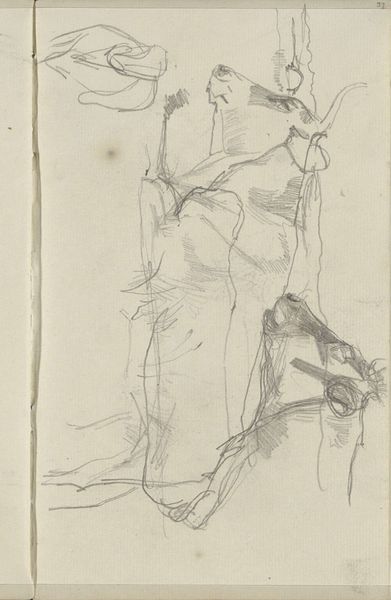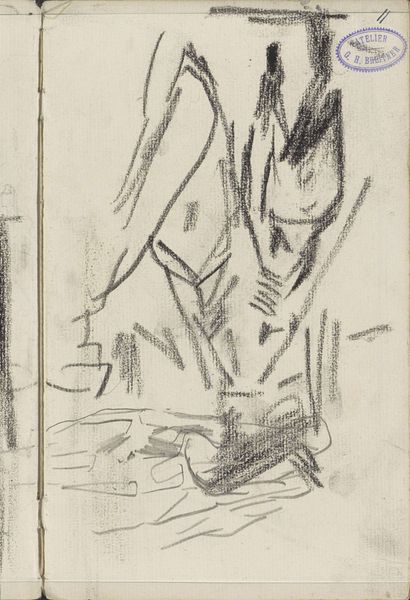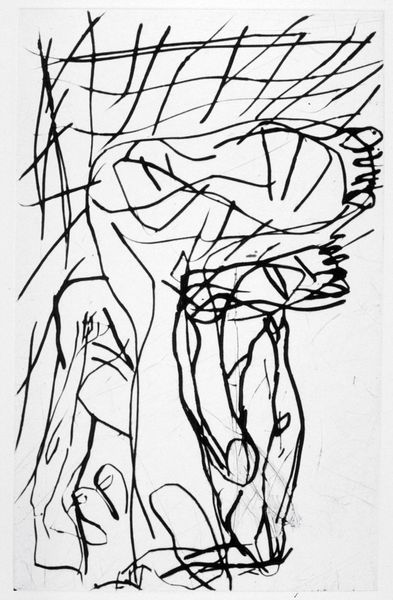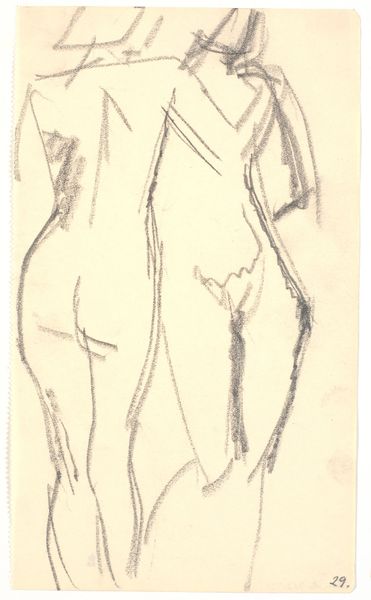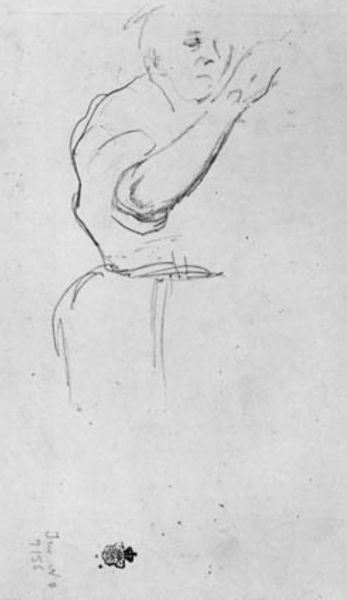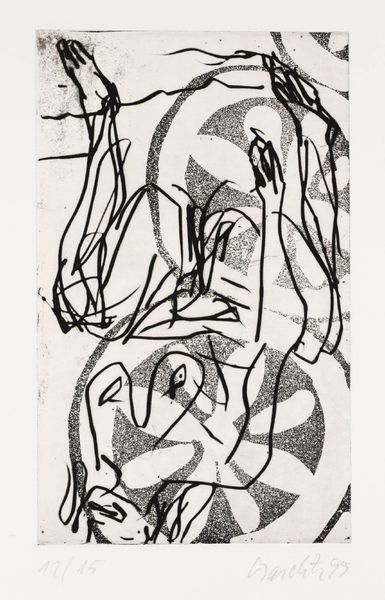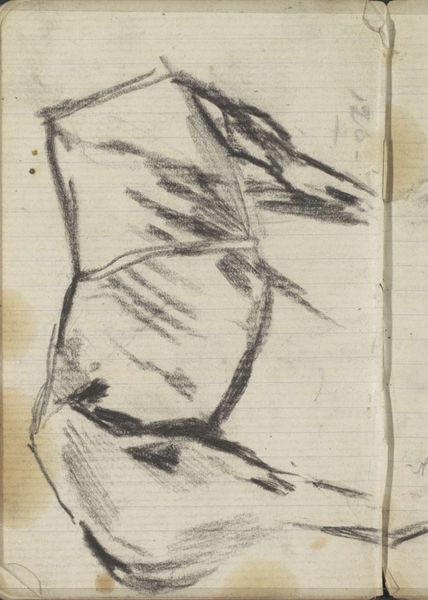
drawing, pencil
#
portrait
#
drawing
#
figuration
#
pencil
#
expressionism
Dimensions: 184 mm (height) x 69 mm (width) (bladmaal)
Curator: This is Othon Friesz's "Stående akrobat" or "Standing Acrobat," created sometime between 1906 and 1909, and part of the collection at the Statens Museum for Kunst. It's a pencil drawing, seemingly a quick sketch of a figure. Editor: My immediate reaction is a feeling of instability, a kind of awkward balance. It’s compelling, though. I get a real sense of the body in motion, or struggling against some force. Curator: I think that captures Friesz's exploration perfectly. Early 20th century Paris, with its burgeoning performance culture, provided the perfect backdrop. He's not just depicting a performer; he’s also engaging with ideas around modernity, the body, and labor. Editor: Right, but let’s push that further. What does it mean to capture the male body this way? Vulnerable, slightly off-kilter? He is almost fragile here. It challenges notions of masculine strength and control that were often prevalent. The circus, as a liminal space, provided artists a platform to question those ideals. Curator: Absolutely. Friesz’s piece reflects a broader fascination with the human form, reminiscent of contemporaries like Picasso or even Degas in their depictions of dancers, capturing the grit of performance, beyond the staged glamour. Editor: And that rawness really comes through in the hasty, almost anxious lines. You can see the artist working, thinking, almost vibrating onto the page, mirroring the physical exertion of the subject, creating almost an Expressionistic edge here in Paris. I like to imagine Friesz grappling not just with an image, but wrestling through all sorts of social tensions. Curator: Yes, there's an undeniable sense of the performative, a pushing against conventions that's characteristic of the period, reflected by his own shifting political convictions and social involvement. Editor: Looking at the work again, that's what resonates most. The body and the performance are a site of contestation, revealing layers of social, political, and personal struggle, which makes this a complex work indeed. Curator: Agreed, a striking encapsulation of artistic and cultural evolution. Editor: Precisely. Thank you for the insights.
Comments
No comments
Be the first to comment and join the conversation on the ultimate creative platform.
